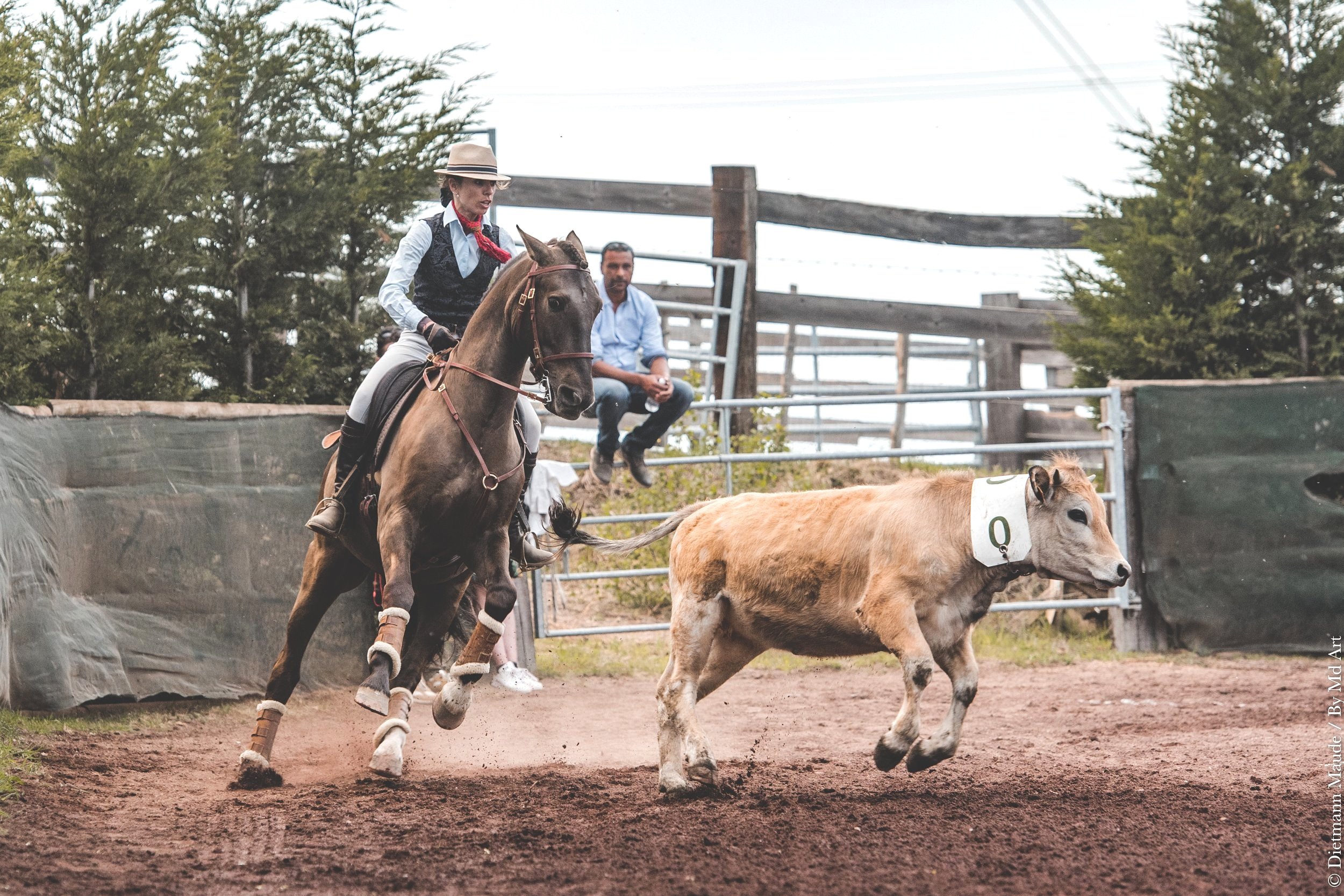The history of the cattle sorting trial
Table of Contents Hide
The cattle sorting trial is an essential element of each Working Equitation competition. And while this activity may seem like a simple competition today, its origins date back to European ranching culture, where moving herds of cattle is an essential part of life.
The importance of sorting in traditional ranching culture
Before the invention of trucks and other modern conveniences, cowboys and vaqueros relied on horseback to move herds across distances. Sorting cattle was not merely done for entertainment; it served a practical purpose in a world where transportation options were limited.
Preserving the legacy of herding on horseback
In the days before mechanization took over, working with cattle required skilled horsemanship and an intimate knowledge of animal behavior.
Cowboys and “Guardians”, the French cowboys in the Camargue region, had the challenging task of maneuvering through the herd to perform necessary tasks.
One crucial aspect of their work was being able to isolate specific individuals from the rest of the group.
Separating injured or vulnerable cattle from the herd
Imagine a situation where a bull becomes injured or a cow is about to give birth amidst a large herd. It becomes imperative to separate the affected individual to provide proper care. This is where the practice of sorting shines.
Skilled riders must navigate the tumultuous sea of bovine bodies and identify the injured or vulnerable animals that require immediate attention. Through gentle guidance and precision, they successfully single out these individuals for specialized care.
Isolating bulls for breeding and other specific purposes
Cattle sorting also plays a crucial role in managing breeding programs and various husbandry practices. Whether taking bulls to certain locations, changing pastures, or introducing a male to breed in an isolated group of cows, precise isolation techniques become paramount.
The ability to select and isolate specific individuals ensures the success of various cattle-related activities.
From practicality to sport: the evolution of cattle sorting
Over time, what was once a necessity transformed into a sport.
The art of cattle sorting became codified, creating structured disciplines and competitions that showcase the skill and teamwork involved in effectively handling livestock.
Codification of sorting as a competitive discipline
Just like dressage figures and technical riding skills, sorting techniques gradually became standardized and formalized. As more people sought to test their horsemanship abilities and connect with their heritage, cattle sorting evolved into a distinct discipline.
Competitors began to refine their skills, aiming for efficiency and accuracy while navigating the dynamic challenges presented by the cattle.
American innovations: working cow, cutting, ranch sorting, and more
When it comes to cattle-related sports, few can match the innovations and variety offered by American practitioners. Within the realm of cattle sorting, different sub-disciplines have emerged, each with its unique focus and rules.
Working cow, cutting, ranch sorting, roping and many others provide exhilarating experiences for both participants and spectators.
These disciplines not only highlight the deep-rooted connection between humans and cattle but also celebrate the rich diversity of equestrian pursuits.
A different approach: cattle sorting in Working Equitation
In the context of Working Equitation competitions, the cattle sorting event is played by a team of 4 riders. One rider is designated as the sorter, and only him is allowed to cross the sorting line and approach the herd.
The sorter is assigned one specific cow, they are usually wearing a collar with a number, or some markings made with paint.
Once the sorter manages to sort out the one cow he must isolate from the herd, the three others help him to drive the cow into a small pen, where she must stay for ten seconds.
The team will repeat this four times, so that each rider can be the sorter.
Embracing cultural appreciation in cattle sorting
As we engage in cattle sorting today, it is essential to honor the philosophy and cultural significance embedded within the discipline.
By reflecting on the challenges faced by ranchers, we gain a newfound appreciation for their resourcefulness, resilience, and symbiotic relationship with their horses.
It’s important to acknowledge the cultural origins of cattle sorting and recognize the diverse communities that contributed to its development. From the Camargue cowboys in France to the Vaqueros in Spain and the American ranchers, each region has added its unique flair to the art of sorting.
By celebrating this diversity, we foster mutual respect and understanding among those who participate in and observe cattle sorting events worldwide.
Cattle sorting in Working Equitation
Cattle sorting is actually at the root of Working Equitation as a sport.
The purpose of the three other trials (dressage, ease of handling and speed) is to demonstrate the horse’s skills and abilities to handle cattle. Then the cattle sorting trial itself is the quintessence of all. Where everything else makes sense.
Understanding the historical context and cultural significance of this practice helps us develop a deeper bond with our horses and the animals they partner with.
Even if you don’t have aspirations to become a real-life rancher, the Cattle Sorting trial is probably the most exhilarating part of practicing Working Equitation!
Interested in learning more about the different trials in Working Equitation and learning how to master this fun and versatile discipline?

